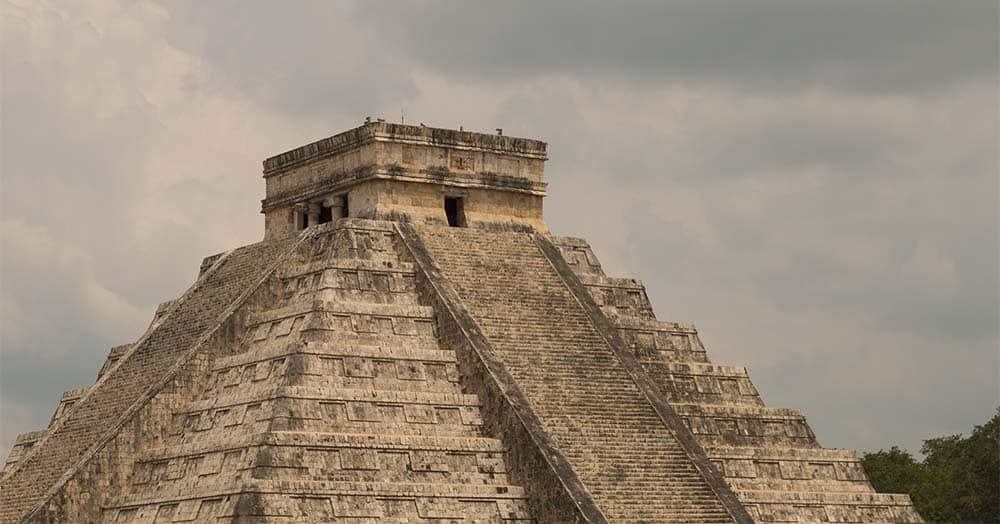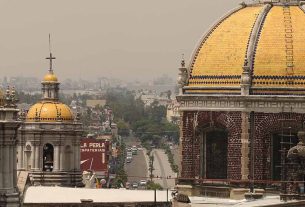A Mayan pyramid built like a matrioska, those little Russian dolls that fit inside each other. This is Chichén Itzá, one of the most important pre-Columbian ruins in Mexico. Located about 200 km from Cancún, Chichén Itzá is very popular: at least two million people pass through there every year.
I was part of this crowd. In June 2017, after driving two hours from Akumal, in the Riviera Maya, I parked my rental car in front of the archaeological site, bought tickets and prepared to make a dream come true. A few meters away it appeared, imposing and very well preserved. Teotihuacan may even be more imposing, Cholula may even win in size, but in terms of beauty it is difficult to surpass Chichén itzá.
See too:
Teotihuacán, Mexico: visit and history of the ruins
The Great Pyramid of Cholula and the magical village
Visit to the National Museum of Anthropology in Mexico City
Cancún, Playa del Carmen and Riviera Maya: how to plan your trip
The region has been inhabited by the Mayans for millennia, but the peak of civilization was between 250 and 900 AD. While the Roman Empire fell, Muhammad emerged in the Arab world and Charlemagne was crowned as the first emperor of the Holy Roman Empire, the Mayans built temples , astronomical observatories, pyramids and large cities. The Mayan civilization had millions of inhabitants and grand cities, such as Tikal, Palenque and Uxmal, in addition to having developed the most developed writing system on the continent.
Amidst so much grandeur, Chichén itzá was a less important city than its neighbors. Until the ninth century came. With it, an unprecedented drought that lasted almost 100 years. This is what a study based on rain marks found in caves in the region guarantees, which showed that the dry period coincides with the decline of several Mayan cities. This is how the cities further south, whose existence depended on agriculture, collapsed and were taken over by the jungle.
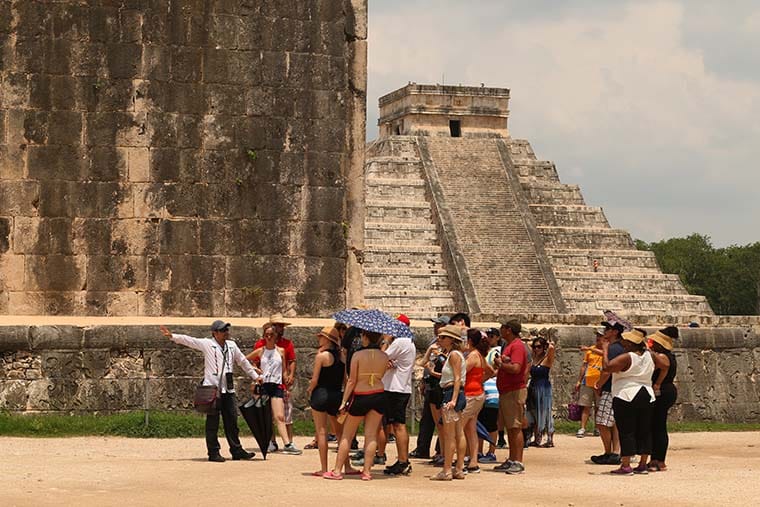
Chichén Itzá had been built around several cenotes, geological formations common in this part of Mexico and where groundwater reaches the surface. This may help explain how it survived and how it ended up becoming a place for a mixture of cultures, not only Mayans, but also Toltecs, who at a certain point migrated from the central region to southern Mexico.
The theory helps explain the layered construction of its main pyramid. The first, 10 meters high, was built between 550 and 800 AD. The second, 20 meters high and built on top of the previous one, emerged from 800 AD, when other Mayan cities went into decline and Chichén itzá saw its population increase . The third layer, measuring 30 meters, appeared between 1050 and 1300 AD. It is the Pyramid of Kukulkan, the main postcard of an archaeological site that was declared a World Heritage Site by Unesco and chosen as one of the Seven New Wonders of the World.
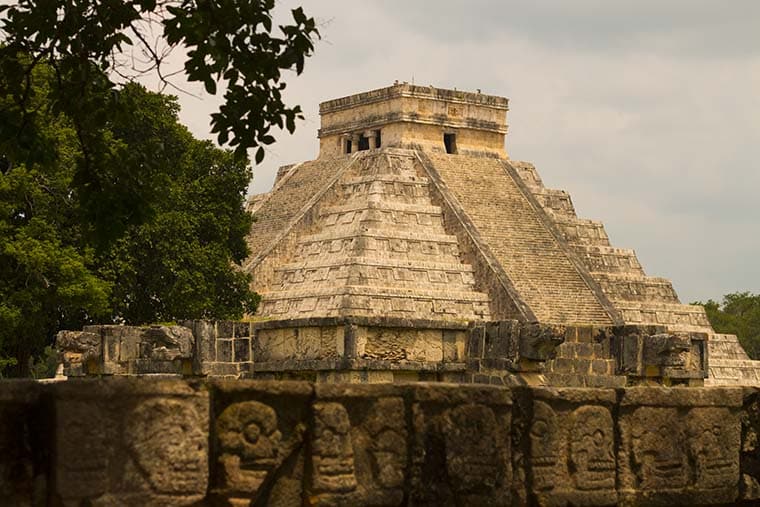
“Notice the serpent’s head, at the foot of the pyramid”, pointed out the guide. “Every year, at the equinox, thousands of people gather here, to see the moment when sunlight forms the body of the serpent on the staircase, an effect that was planned by the Mayans, who were great astronomers,” he explained. I wasn’t at Chichén Itzá at that time, but during occasionally organized nighttime tours of the ruins, artificial lights simulate the effect, shown in the photo below.
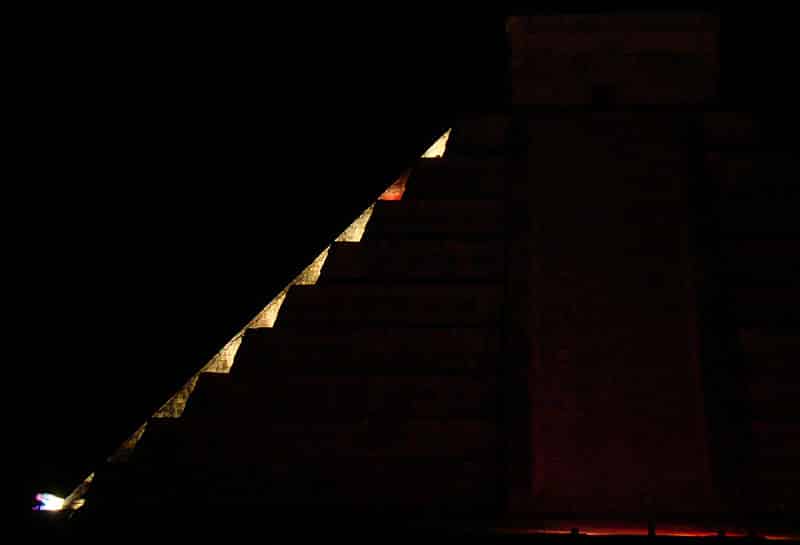
Photo: Wikimedia Commons
Each of the four staircases that lead to the top of the pyramid has 91 steps. Add this number to the last step, at the top, and the total is 365, the number of days in the Mayan calendar. It is currently not allowed to climb the pyramid, a decision taken to preserve the building.
The Kukulkan Pyramid is not the only building in the complex, although it is the best preserved. Behind it is the Temple of Warriors, which in turn is surrounded by a Thousand Columns, which supported the roof of a large building. Also noteworthy is a Palace that the Spanish called The Nuns and an astronomical observatory that Europeans named El Caracol.
At the other end of the site is one of the most interesting buildings in Chichén itzá, a type of arena 150 meters long and where what is now known as the Mesoamerican ball game, the most important sport in Mayan culture, was played.
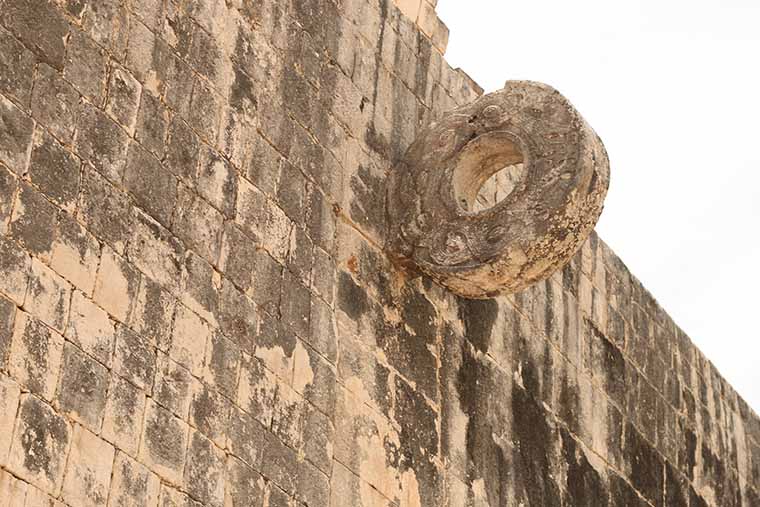
In it, two teams competed to see which one could pass a rubber ball through a small stone hoop – all without using their hands, just their thighs, arms and hips. Although it was also practiced by the general population, informally, the dispute in this arena was considered sacred and followed by the entire city. Archaeologists found 13 arenas in Chichén Itzá alone and there are hundreds spread across the American continent, as variants of this sport were practiced in several civilizations in the New World. The main arena at Chichén Itzá is the largest of its kind.
Standing in the center of the arena, the guide who accompanied us clapped, a ritual, I soon noticed, followed by all the guides who worked there and countless tourists. The sound reverberated throughout the structure. “It was designed so that the sound could be heard easily from one side to the other,” he explained, ensuring that the effect was even better when the entire structure was standing. Winning the games was a great feat, celebrated by the entire city. On those days, the festival ended with a series of human sacrifices.
Which takes us to another very interesting point in Chichén Itzá, the Sacred Cenote. With 60 meters in diameter and great depth, this cenote was the setting for human sacrifices and pilgrimages. Excavations have removed thousands of objects from the cenote, from gold and jade utensils and weapons to human remains.
Smaller structures complete the list of attractions at the archaeological site, which can be visited in one day.
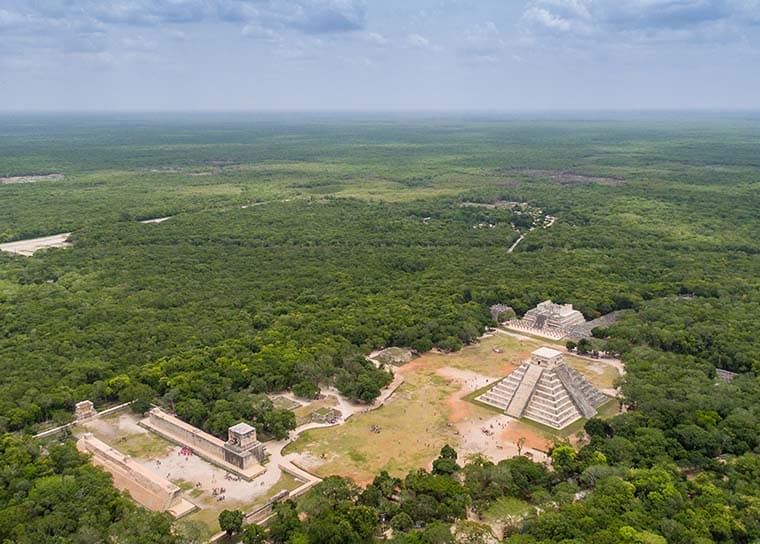
Aerial photo of Chichén Itzá shows the arena (bottom left), pyramid and temple (Dronepicr/Wikimedia Commons)
Chichén Itzá: how to get there, where to stay, timetables and tickets
Most tourists come from Cancún, Playa del Carmén or the rest of the Riviera Maya, which is 200 kilometers from Chichén itzá. That’s what I did. Travel agencies organize day trip excursions, including a stop for diving in a cenote and lunch before arriving in Chichén Itzá, around noon. It’s busy and you share the visit with a huge group, but if there’s no other way out, just ask your hotel for a tour recommendation.
If you have a little more time, however, it’s worth renting a car and going on your own. The roads are good and you don’t need an international driver’s license to drive there – in this text we explain how to rent a car in Mexico.
That’s what we did. We picked up the vehicle in Playa del Carmen and took the opportunity to visit some cenotes, as well as Akumal and Tulum. We went on a day trip, leaving around 8 am from Akumal, but I think the best thing is to sleep one night, either in Chichén itzá, where there are hotels, or in Valladolid, a cute colonial city that is 45 km from the archaeological site . If you don’t have a car, making Valladolid a base can also be a good idea, as buses leave from there to the ruins daily.
If you decide to stay in Chichén Itzá, there are options around the ruins, such as Villas Arqueologicas Chichen Itza, Mayaland Hotel & Bungalows and Hotel Chichen Itza. And Booking also lists several accommodation options in Valladolid. Look here.
Chichén itzá (green icon) and surrounding tourist towns
Try to combine your visit with two other Mayan ruins that are halfway between Chichén itzá and Cancún: Cobá, which is in the middle of a forest and in front of a lake, and Tulum, seaside ruins located in the city of the same name. If you want to go the other way, a good alternative is to continue the journey towards Mérida, which is 120 km from Chichén itzá.
The archaeological site is open every day, from 8am to 5pm. Queues are common, so factor in a wait of at least an hour. The ticket office closes at 4pm. Entrance costs 232 pesos, which is around 50 reais. They accept cards.
It’s worth hiring a guide for the visit – they are in abundance, right after the ticket office, and negotiate the price directly with your group. Bring plenty of water, use sunscreen and wear comfortable shoes. Before leaving, stop by the crafts fair inside the park, on the way to the Sacred Cenote, which has many interesting things. Prices drop at the end of the day, when artisans prepare to close their workday.
Sign up for our newsletter

Sign up for our newsletter and stay up to date with exclusive news
that can transform your routine!
Warning: Undefined array key "title" in /home/storelat/public_html/wp-content/plugins/link-whisper-premium/templates/frontend/related-posts.php on line 12
Warning: Undefined array key "title_tag" in /home/storelat/public_html/wp-content/plugins/link-whisper-premium/templates/frontend/related-posts.php on line 13

